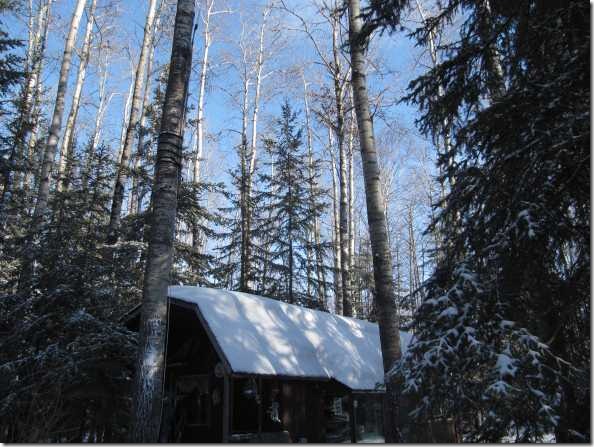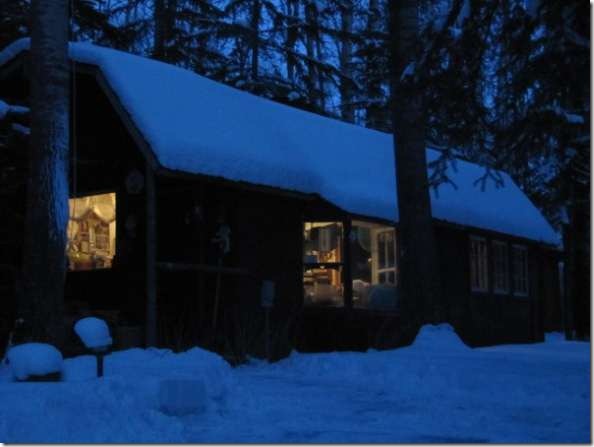Poplars do not shiver the sternum like a towering Douglas fir. Compared to the sage oak the poplar is a pimply adolescent. Even a clump of willow or craggy birch invites the gaze and suggests a moments pause. And in name, how can poplar stand up to cedar of Lebanon? But a poplar—hardly a hardwood, the grey moth of the deciduous clan, the dandelion of the boreal woods, siring suckers and saplings—gives itself to the evolution of tree cover. They are the jubilee of millennial forests.
Poplars, aspen or balsam, like monks at compline, will stand dying for decades. Self-pruning themselves always until 30 feet up, weakened by borers or longhorn beetles, or age and disease, the top will suddenly come horizontal in a wind, fall to the understory and rot into the leaf-layer. The remainder may stay another decade or more. These tall stumps are always on the rot, alive with ants, or hollowed by weather and weevils, or flickers and squirrels, until they too, fall.
The poplar standing 70 or more feet above the roof of our cabin, its barrel trunk almost grazing the eave, had lived its life well enough. Drawing water from as far as the fen until it had its fill of seasons. And like Virginia Woolf’s moth, it seemed to say, oh yes, death is stronger than I am. A slow, struggling down death. In the end, two years ago, a few top branches leafed out, then it was done—the leaves dying on their own petioles lacking the vigour to release themselves.
It was a bright January morning, in the middle of an unusual week of mild days when I made the decision. A few inches of snow covered the fen and lay in circles around the spruce trees. Mild temperatures had given the open areas a skin of ice—it was a false spring but the feel was there and I was awake to the deed.
I had watched the poplar for a decade knowing a time would come. The thing was inches from the gambrel-roof and I had studied it often for a way to bring it down without wrecking the entire end of the cabin. I settled on a route: after passing the overhang it would hit a broad limb on another biggish poplar, but if the angle was right it would maintain direction and thread itself between the trees with little damage.
The old tree was straight, balanced, with no discernable lean. This was good. I climbed the ladder pulling up one end of a cable, threw it around the trunk and fastened a u-clamp creating slip knot around 15 feet up the tree. I walked the other end of the cable a hundred feet out and hooked it to a hand-winch that was fastened to a heavy chain around the base of a strategic willow.
I had put a new chain on my saw and it sank into the bark sending a stream of wood chips past my hip. Checking my work, I cut a large notch on the tree; the centre of the notch pointed to where I wanted tree to fall. I walked to the willow and winched the cable tight. I went back to the poplar and on the opposite side made a cut six-inches above the opposing notch. The tree shuttered. I could hear the clicking, like a combination lock, deep at the core. Wood fibre bending then breaking, strands straining but holding. I walked back to the winch and pumped it twice. The cable sang, then went slack. And the tree came to me.
I watched it travel past the roof and nearby poplar, grazing the stout limb that never gave it a thought. It moved between the spruce trees taking a few green bows; the base came free, the crown became a blur, and it exploded on the ground. And then the smell evergreen and sour pulp.
The fall was perfect. I cheered and clapped. It even missed, by an inch, the frozen-to-the-ground planter I had considered expendable.
The large trunk broke in two places; here its core was brown and cork-rotten. But the base of the tree still held a year’s worth of sap. I counted 70 or 80 rings. With its memory for flowers borne in catkins it was hanging on for another ring, unaware of its own death.
The evening came, the fire died in the pit and I looked over the cabin to the hole in the horizon, and for a moment, missed it. But in a gale, while I lay awake to the freight train in the tops of the trees, I would no longer worry over 30 feet of trunk opening a hole in the hip-roof and driving me through the bed and chip-board floor to where the squirrels live.



Really loved this, Stephen. Simply told with compelling language, powerful but unobtrusive metaphors, satisfying ending. Beautifully crafted.
Thank you Treleigh. You make me want to keep writing.
Loved your last piece on the Snowy Owl.
http://naturalpresence.wordpress.com/2012/02/27/reading-home/